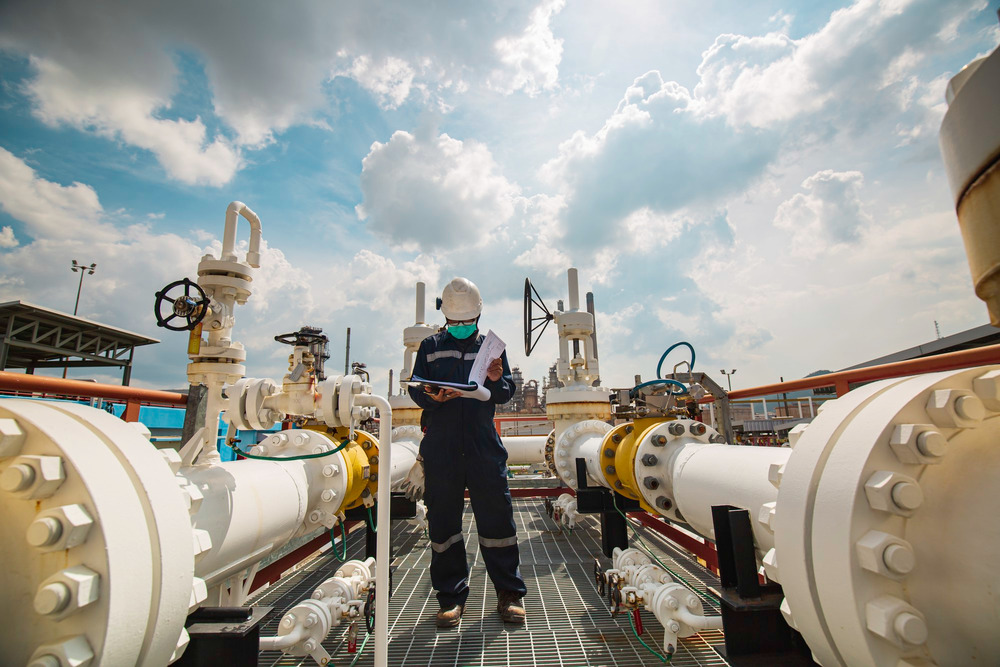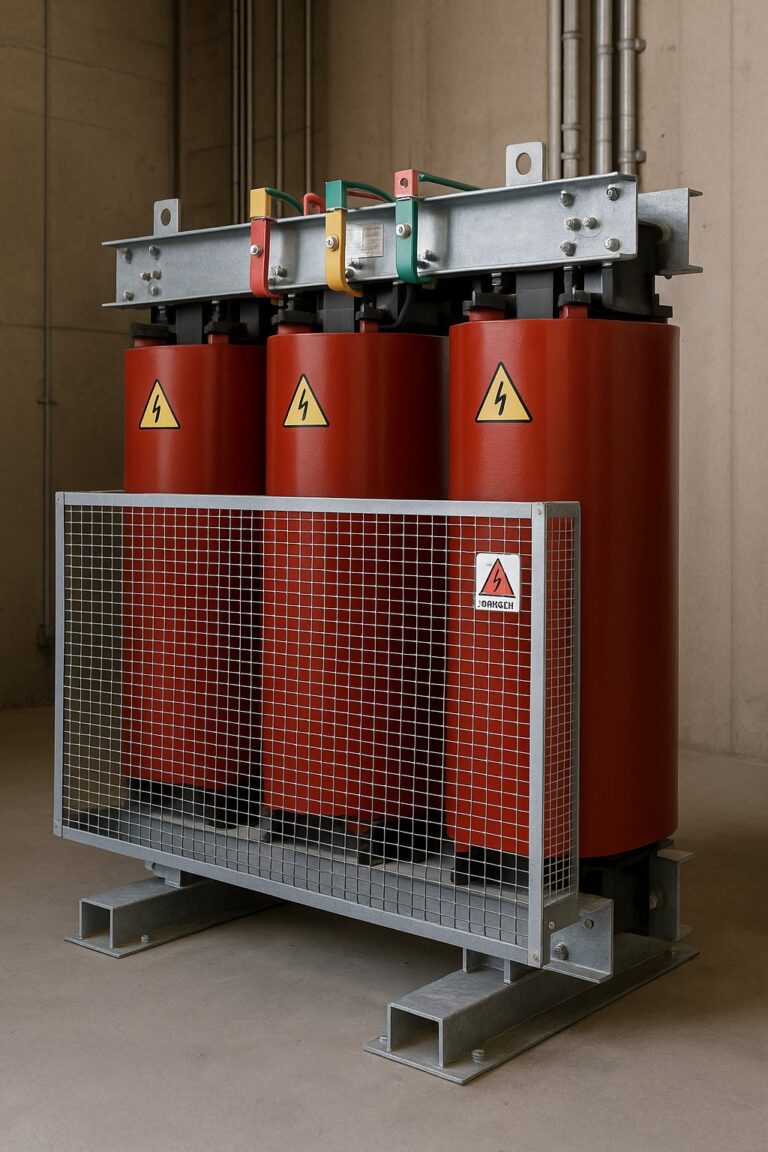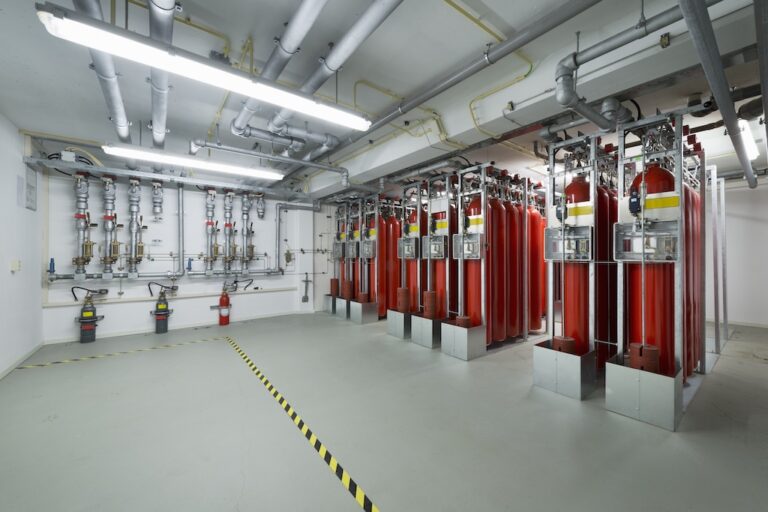What is CCTV? What Does a CCTV System Do?
CCTV, or Closed-Circuit Television, is a technology widely used for security and surveillance purposes. It operates through a closed network...
Devamını Oku

A transformer is an essential device in electrical systems designed to transfer electrical energy between circuits. It efficiently converts voltage levels, allowing electricity to travel long distances with minimal losses and be distributed safely to homes, businesses, and industries. What does transformer mean? This term encompasses devices used in power generation, transmission, and distribution systems to regulate energy flow.
A substation and its transformers play a critical role in managing energy transfer from high-voltage transmission lines to lower voltages suitable for end users. What is a transformer and what does it do? The answer lies in its ability to optimize electricity usage, ensuring reliability and cost-effectiveness.
Transformers come in various forms, from dry type transformers to those built for outdoor use. They are indispensable in enabling the modern electrical grid to function efficiently. Their design, types, and applications are tailored to meet specific needs across industries.
A transformer is an electrical device that transfers energy between two or more circuits through electromagnetic induction. It is primarily used to change the voltage level of alternating current (AC), either stepping it up for long-distance transmission or stepping it down for safer usage in homes and businesses. This process allows efficient energy transportation across large distances while minimizing power loss.
The main components of a transformer are the primary winding, secondary winding, and a magnetic core. When an alternating current flows through the primary winding, it creates a magnetic field in the core, inducing voltage in the secondary winding. This voltage can either increase or decrease, depending on the application.
Transformers are integral to modern electrical infrastructure. Whether in energy production, transmission, or end-user applications, transformers ensure energy flows smoothly and efficiently. Understanding what is a transformer is key to grasping its vital role in energy management.
A substation is a facility within an electrical distribution system that transforms high-voltage electricity from power plants into lower voltages suitable for delivery to homes, businesses, and industrial facilities. Substations are essential in ensuring the safe and efficient transfer of energy across the electrical grid.
Substations house key equipment, including transformers, switchgear, circuit breakers, and control systems. These components work together to regulate voltage, control power flow, and protect the system from faults. Substations can be found in outdoor or indoor setups, depending on the geographic and operational requirements.
The primary purpose of a substation is to act as a hub where electricity is processed and redirected. They are integral to maintaining grid stability and ensuring that electricity reaches end-users in a reliable and controlled manner. By understanding what is a substation, one gains insight into the backbone of modern power distribution networks.
A transformer serves a crucial purpose in the generation, transmission, and distribution of electricity. Its primary function is to modify voltage levels, either stepping them up or down, to meet the specific needs of the electrical system. High voltage is essential for efficient long-distance energy transmission, while lower voltage is safer and more practical for residential, commercial, and industrial use.
In power transmission systems, transformers reduce energy loss by increasing the voltage at the generation source. When the energy reaches a substation, another transformer reduces the voltage to safe levels for end users. This dual functionality ensures energy is delivered efficiently and cost-effectively.
Additionally, transformers enable compatibility between different electrical devices and systems. By adjusting voltage and current, they protect equipment from damage and optimize performance. Whether in industrial applications or residential settings, understanding what does a transformer do highlights its indispensable role in modern power infrastructure.
A transformer operates based on the principle of electromagnetic induction, which allows the transfer of electrical energy between two circuits without physical contact. It consists of three main components: the primary winding, the secondary winding, and a magnetic core that links the two windings.
Here’s how it works:
Transformers can either step up (increase) or step down (decrease) voltage levels. This process is efficient, as there are minimal energy losses, and it ensures the safe and effective delivery of power across electrical grids. Understanding how the transformer works is fundamental to appreciating its role in modern energy systems.
Transformers are categorized based on their design, purpose, and operation. Understanding transformer types helps identify the right one for specific applications in power systems, industries, and residential settings. Here are the main classifications:
Transformer Types According to Intended Use
Transformer Types According to Working Principle
Transformer Types According to Phase Number
Each type serves specific needs, from ensuring safety to optimizing performance. These classifications underline the versatility of transformers in electrical systems.
Transformers are designed for specific applications, making them indispensable in various power systems. Here’s a breakdown of the main types:
Power transformers are used in electrical power generation and transmission systems to handle high voltage and large amounts of energy. Their primary purpose is to step up voltage for long-distance transmission, reducing energy loss. These transformers are typically found in substations and power plants.
Distribution transformers step down voltage levels for residential, commercial, and small industrial users. They operate at lower voltages compared to power transformers and are designed for continuous use, ensuring energy delivery to end-users.
Measurement transformers are specialized devices for accurately measuring voltage and current in high-power systems. They ensure safe and precise monitoring, which is essential for energy management and fault detection.
Insulating transformers serve to electrically isolate circuits, improving safety and preventing fault propagation. These transformers are commonly used in sensitive applications, such as medical equipment and laboratory setups.
Auto transformers share windings between the primary and secondary circuits, making them more compact and cost-effective. They are ideal for voltage regulation and applications requiring small voltage adjustments.
The working principle of transformers varies based on their cooling and insulation methods. Below are the two primary types:
Dry type transformers use air as the cooling medium, eliminating the need for oil. These transformers are designed for indoor applications where fire safety is a concern, such as hospitals, schools, and commercial buildings. The windings and core are encapsulated in a material like epoxy resin, providing excellent insulation and resistance to environmental factors.
Oil type transformers use specially formulated oil for both cooling and insulation. The oil circulates within the transformer, dissipating heat generated during operation. These transformers are ideal for outdoor installations and heavy-duty applications, such as in substations and industrial facilities. Their robust design allows them to handle higher loads efficiently.
Transformers can be categorized based on the number of phases they operate with, which determines their application in different electrical systems.
Single phase transformers are designed for low-power applications. They are commonly used in residential areas and small electrical devices, where the power demand is minimal. These transformers are compact, cost-effective, and easy to install, making them ideal for localized energy needs.
Three phase transformers are used in high-power applications, such as industrial facilities, power plants, and large-scale electrical grids. They are more efficient for transmitting and distributing electricity over long distances. Their ability to handle higher loads makes them indispensable for modern infrastructure.

CCTV, or Closed-Circuit Television, is a technology widely used for security and surveillance purposes. It operates through a closed network...
Devamını Oku
A dry-type transformer is a type of electrical transformer that operates without the use of liquid insulation, making it a...
Devamını Oku
Fire suppression systems are essential safety measures designed to control and extinguish fires quickly and effectively. The FM200 fire extinguishing...
Devamını OkuPROTECTION OF PERSONAL DATA
WEBSITE COOKIE POLICY
Your personal data; It is one of the leading principles of our Organization to protect the privacy of visitors to the website (www.adatech.com.tr) operated by ADATECH as the data controller. This Cookie Usage Policy (“Policy”) explains to all our website visitors and users which types of cookies are used and under what conditions.
Cookies are small text files stored on your device or network server by websites you visit on your computer or mobile device.
They are generally used to provide you with a personalized experience during your use of the website you visit, to improve the services offered and to improve your experience, and may contribute to ease of use while browsing a website. If you do not prefer the use of Cookies, you can delete or block Cookies in your browser settings. However, we would like to remind you that this may affect your use of our website. Unless you change your cookie settings in your browser, we will assume that you accept the use of cookies on this website.
1. WHAT KIND OF DATA IS PROCESSED IN COOKIES?
Cookies on websites, depending on their type, collect data about your browsing and usage preferences on the device you visit the site. This data includes information about the pages you access, the services and products you review, your preferred language option and other preferences.
2. WHAT is a solution and what are its intended uses?
Cookies are small text files that are stored on your device or network server through browsers by websites you visit. These small text files, which contain your preferred language and other settings on the site, help us remember your preferences the next time you visit the site and make improvements to our services to improve your experience on the site. Thus, you can have a better and personalized usage experience on your next visit.
The main purposes of using cookies on our Website are listed below:
3.TYPES OF COOKIES USED ON OUR WEBSITE
3.1. Oturum Çerezleri
Session cookies ensure that the website functions properly during your visit. They are used for purposes such as ensuring the security and continuity of our sites and you during your visit. Session cookies are temporary cookies, they are deleted when you close your browser and come to our site again, they are not permanent.
3.2. Persistent Cookies
These types of cookies are used to remember your preferences and are stored on your device via browsers. Persistent cookies remain stored even after you close your browser or restart your computer from which you visited our site. These cookies are kept in subfolders of your browser until they are deleted through your browser’s settings.
Some types of persistent cookies may be used to provide you with special suggestions, taking into account issues such as your purpose of using the Website.
Thanks to persistent cookies, if you visit our Website again with the same device, it is checked whether there is a cookie created by our Website on your device and if there is, it is understood that you have visited the site before and the content to be transmitted to you is determined accordingly and thus a better service is provided to you.
3.3. Mandatory/Technical Cookies
These cookies are essential for the website you visit to function properly. The purpose of such cookies is to provide necessary services by enabling the website to function. For example, it allows you to access secure parts of the website, to use its features, to navigate on it.
3.4. Analytical Cookies
They collect information about the way the website is used, the frequency and number of visits, and show how visitors navigate to the site. The purpose of using such cookies is to increase performance by improving the way the site functions and to determine the general trend direction. They do not contain data that could enable the identification of visitors. For example, they show the number of error messages displayed or the most visited pages.
3.5. Functional/Functional Cookies
It saves the choices made by the visitor within the site and remembers them on the next visit. The purpose of such cookies is to provide ease of use to visitors. For example, it prevents the site user from re-entering the user password on each page they visit.
3.6. Targeting/Advertising Cookies
They enable the measurement of the effectiveness of advertisements served to visitors and the calculation of the number of times the advertisements are viewed. The purpose of such cookies is to serve ads customized to the interests of visitors.
Likewise, they enable the detection of visitors’ interests specific to their browsing and the presentation of appropriate content. For example, it prevents the advertisement shown to the visitor from being shown again in a short time.
4. HOW TO MANAGE COOKIE PREFERENCES?
To change your preferences regarding the use of cookies or to block or delete cookies, simply change your browser settings.
Many browsers give you the option to accept or reject cookies, accept only certain types of cookies, or be alerted by the browser when a website requests to store cookies on your device so that you can control cookies.
It is also possible to delete cookies previously saved in your browser.
If you disable or refuse cookies, you may need to set some preferences manually, some features and services on the website may not function properly as we will not be able to recognize and associate your account. You can change the settings of your browser by clicking on the relevant link from the table below.
5. ENFORCEMENT OF WEBSITE PRIVACY POLICY
Website Privacy Policy …./…./…./…. . is dated. In case all or certain articles of the Policy are renewed, the effective date of the Policy will be updated. The Privacy Policy is published on the website of the Authority (www.adatech.com.tr) and made available to the relevant persons upon the request of the personal data owners.
ADATECH
Address: Esenyalı Neighborhood Yanyol Street Varyap Plaza No:61-148 Pendik / Istanbul
Telephone: +90 (216 ) 514 80 69
E-mail: info@adatech.com.tr
Web Address: www.adatech.com.tr